| 1.
|
Benjamin Michael Yeoman, Parag Katira, Wenguo Cui,
A stochastic algorithm for accurately predicting path persistence of cells migrating in 3D matrix environments,
2018,
13,
1932-6203,
e0207216,
10.1371/journal.pone.0207216
|
|
| 2.
|
Shoubin Dong, Zetao Huang, Liqun Tang, Xiaoyang Zhang, Yongrou Zhang, Yi Jiang,
A three-dimensional collagen-fiber network model of the extracellular matrix for the simulation of the mechanical behaviors and micro structures,
2017,
20,
1025-5842,
991,
10.1080/10255842.2017.1321113
|
|
| 3.
|
Marco Scianna, Luigi Preziosi,
A Cellular Potts Model for Analyzing Cell Migration across Constraining Pillar Arrays,
2021,
10,
2075-1680,
32,
10.3390/axioms10010032
|
|
| 4.
|
Gabriel Shatkin, Benjamin Yeoman, Katherine Birmingham, Parag Katira, Adam J. Engler,
Computational models of migration modes improve our understanding of metastasis,
2020,
4,
2473-2877,
041505,
10.1063/5.0023748
|
|
| 5.
|
Satoru Okuda, Takashi Miura, Yasuhiro Inoue, Taiji Adachi, Mototsugu Eiraku,
Combining Turing and 3D vertex models reproduces autonomous multicellular morphogenesis with undulation, tubulation, and branching,
2018,
8,
2045-2322,
10.1038/s41598-018-20678-6
|
|
| 6.
|
Maarten van der Sande, Yulia Kraus, Evelyn Houliston, Jaap Kaandorp,
A cell-based boundary model of gastrulation by unipolar ingression in the hydrozoan cnidarian Clytia hemisphaerica,
2020,
460,
00121606,
176,
10.1016/j.ydbio.2019.12.012
|
|
| 7.
|
Veronika te Boekhorst, Luigi Preziosi, Peter Friedl,
Plasticity of Cell Migration In Vivo and In Silico,
2016,
32,
1081-0706,
491,
10.1146/annurev-cellbio-111315-125201
|
|
| 8.
|
R. Allena, M. Scianna, L. Preziosi,
A Cellular Potts Model of single cell migration in presence of durotaxis,
2016,
275,
00255564,
57,
10.1016/j.mbs.2016.02.011
|
|
| 9.
|
Marco Scianna,
An extended Cellular Potts Model analyzing a wound healing assay,
2015,
62,
00104825,
33,
10.1016/j.compbiomed.2015.04.009
|
|
| 10.
|
Chiara Giverso, Luigi Preziosi,
2014,
Chapter 5,
978-3-319-02656-5,
59,
10.1007/978-3-319-02657-2_5
|
|
| 11.
|
Vincent E. Debets, Liesbeth M.C. Janssen, Cornelis Storm,
Enhanced persistence and collective migration in cooperatively aligning cell clusters,
2021,
00063495,
10.1016/j.bpj.2021.02.014
|
|
| 12.
|
Nadia Loy, Luigi Preziosi,
Modelling physical limits of migration by a kinetic model with non-local sensing,
2020,
80,
0303-6812,
1759,
10.1007/s00285-020-01479-w
|
|
| 13.
|
David Lepzelter, Muhammad H. Zaman,
Modeling Persistence in Mesenchymal Cell Motility Using Explicit Fibers,
2014,
30,
0743-7463,
5506,
10.1021/la404832t
|
|
| 14.
|
L. Preziosi, M. Scianna,
2016,
Chapter 3,
978-3-319-42678-5,
131,
10.1007/978-3-319-42679-2_3
|
|
| 15.
|
Ondrej Maxian, Alex Mogilner, Wanda Strychalski, Christopher V. Rao,
Computational estimates of mechanical constraints on cell migration through the extracellular matrix,
2020,
16,
1553-7358,
e1008160,
10.1371/journal.pcbi.1008160
|
|
| 16.
|
Marina A. Ferreira, Evangeline Despin-Guitard, Fernando Duarte, Pierre Degond, Eric Theveneau, Philip K. Maini,
Interkinetic nuclear movements promote apical expansion in pseudostratified epithelia at the expense of apicobasal elongation,
2019,
15,
1553-7358,
e1007171,
10.1371/journal.pcbi.1007171
|
|
| 17.
|
Hamid Bolouri,
Network dynamics in the tumor microenvironment,
2015,
30,
1044579X,
52,
10.1016/j.semcancer.2014.02.007
|
|
| 18.
|
Xiaofeng Liu, Diego A. Vargas, Dongyuan Lü, Yan Zhang, Muhammad H. Zaman, Mian Long,
Computational Modeling of Stem Cell Migration: A Mini Review,
2014,
7,
1865-5025,
196,
10.1007/s12195-014-0330-2
|
|
| 19.
|
Katrin Talkenberger, Elisabetta Ada Cavalcanti-Adam, Anja Voss-Böhme, Andreas Deutsch,
Amoeboid-mesenchymal migration plasticity promotes invasion only in complex heterogeneous microenvironments,
2017,
7,
2045-2322,
10.1038/s41598-017-09300-3
|
|
| 20.
|
Adrian Moure, Hector Gomez,
Phase-Field Modeling of Individual and Collective Cell Migration,
2021,
28,
1134-3060,
311,
10.1007/s11831-019-09377-1
|
|
| 21.
|
Nicola Mulberry, Leah Edelstein-Keshet,
Self-organized multicellular structures from simple cell signaling: a computational model,
2020,
17,
1478-3975,
066003,
10.1088/1478-3975/abb2dc
|
|
| 22.
|
G. Wayne Brodland,
How computational models can help unlock biological systems,
2015,
47-48,
10849521,
62,
10.1016/j.semcdb.2015.07.001
|
|
| 23.
|
Sonja E. M. Boas, Roeland M. H. Merks,
Synergy of cell–cell repulsion and vacuolation in a computational model of lumen formation,
2014,
11,
1742-5689,
20131049,
10.1098/rsif.2013.1049
|
|
| 24.
|
Fleur Jeanquartier, Claire Jean-Quartier, David Cemernek, Andreas Holzinger,
In silico modeling for tumor growth visualization,
2016,
10,
1752-0509,
10.1186/s12918-016-0318-8
|
|
| 25.
|
Sjoerd van Helvert, Cornelis Storm, Peter Friedl,
Mechanoreciprocity in cell migration,
2018,
20,
1465-7392,
8,
10.1038/s41556-017-0012-0
|
|
| 26.
|
Nadia Loy, Luigi Preziosi,
Kinetic models with non-local sensing determining cell polarization and speed according to independent cues,
2020,
80,
0303-6812,
373,
10.1007/s00285-019-01411-x
|
|
| 27.
|
MA Al-Mamun, W. Srisukkham, C. Fall, R. Bass, A. Hossain, D.M. Farid,
2014,
A cellular automaton model for hypoxia effects on tumour growth dynamics,
978-1-4799-6399-7,
1,
10.1109/SKIMA.2014.7083562
|
|
| 28.
|
N. E. Muzzio, M. A. Pasquale, M. A. C. Huergo, A. E. Bolzán, P. H. González, A. J. Arvia,
Spatio-temporal morphology changes in and quenching effects on the 2D spreading dynamics of cell colonies in both plain and methylcellulose-containing culture media,
2016,
42,
0092-0606,
477,
10.1007/s10867-016-9418-3
|
|
| 29.
|
Elies Fuster-Garcia, Juan Miguel García-Gómez, Elena De Angelis, Arthur Sraum, Arthur Molnar, Sabine Van Huffel, Georgios Stamatakos,
2017,
Chapter 16,
978-3-319-43502-2,
181,
10.1007/978-3-319-43504-6_16
|
|
| 30.
|
M. Scianna, C.G. Bell, L. Preziosi,
A review of mathematical models for the formation of vascular networks,
2013,
333,
00225193,
174,
10.1016/j.jtbi.2013.04.037
|
|
| 31.
|
Francisco Merino-Casallo, Maria J. Gomez-Benito, Yago Juste-Lanas, Ruben Martinez-Cantin, Jose M. Garcia-Aznar,
Integration of in vitro and in silico Models Using Bayesian Optimization With an Application to Stochastic Modeling of Mesenchymal 3D Cell Migration,
2018,
9,
1664-042X,
10.3389/fphys.2018.01246
|
|
| 32.
|
Francisco Serrano-Alcalde, José Manuel García-Aznar, María José Gómez-Benito,
The role of nuclear mechanics in cell deformation under creeping flows,
2017,
432,
00225193,
25,
10.1016/j.jtbi.2017.07.028
|
|
| 33.
|
Joao Carvalho, Valeria Lopes, Rui Travasso,
Tumor cell invasiveness in the initial stages of bladder cancer development ‐ A computational study,
2021,
37,
2040-7939,
10.1002/cnm.3417
|
|
| 34.
|
Yony Bresler, Benoit Palmieri, Martin Grant,
Sharp interface model for elastic motile cells,
2019,
42,
1292-8941,
10.1140/epje/i2019-11815-x
|
|
| 35.
|
Sandeep Kumar, Aastha Kapoor, Sejal Desai, Mandar M. Inamdar, Shamik Sen,
Proteolytic and non-proteolytic regulation of collective cell invasion: tuning by ECM density and organization,
2016,
6,
2045-2322,
10.1038/srep19905
|
|
| 36.
|
Janaina de Andréa Dernowsek, Rodrigo Alvarenga Rezende, Jorge Vicente Lopes da Silva,
The role of information technology in the future of 3D biofabrication,
2017,
1,
2059-4755,
63,
10.2217/3dp-2016-0005
|
|
| 37.
|
Tullio Genova, Guillaume P. Grolez, Chiara Camillo, Michela Bernardini, Alexandre Bokhobza, Elodie Richard, Marco Scianna, Loic Lemonnier, Donatella Valdembri, Luca Munaron, Mark R. Philips, Virginie Mattot, Guido Serini, Natalia Prevarskaya, Dimitra Gkika, Alessandra Fiorio Pla,
TRPM8 inhibits endothelial cell migration via a non-channel function by trapping the small GTPase Rap1,
2017,
216,
0021-9525,
2107,
10.1083/jcb.201506024
|
|
| 38.
|
Catalina-Paula Spatarelu, Hao Zhang, Dung Trung Nguyen, Xinyue Han, Ruchuan Liu, Qiaohang Guo, Jacob Notbohm, Jing Fan, Liyu Liu, Zi Chen,
Biomechanics of Collective Cell Migration in Cancer Progression: Experimental and Computational Methods,
2019,
5,
2373-9878,
3766,
10.1021/acsbiomaterials.8b01428
|
|
| 39.
|
D. Aubry, H. Thiam, M. Piel, R. Allena,
A computational mechanics approach to assess the link between cell morphology and forces during confined migration,
2015,
14,
1617-7959,
143,
10.1007/s10237-014-0595-3
|
|
| 40.
|
A. Arduino, L. Preziosi,
A multiphase model of tumour segregation in situ by a heterogeneous extracellular matrix,
2015,
75,
00207462,
22,
10.1016/j.ijnonlinmec.2015.04.007
|
|
| 41.
|
Paola Masuzzo, Marleen Van Troys, Christophe Ampe, Lennart Martens,
Taking Aim at Moving Targets in Computational Cell Migration,
2016,
26,
09628924,
88,
10.1016/j.tcb.2015.09.003
|
|
| 42.
|
Guillermo Vilanova, Ignasi Colominas, Hector Gomez,
Coupling of discrete random walks and continuous modeling for three-dimensional tumor-induced angiogenesis,
2014,
53,
0178-7675,
449,
10.1007/s00466-013-0958-0
|
|
| 43.
|
Mélina L. Heuzé, Pablo Vargas, Mélanie Chabaud, Maël Le Berre, Yan-Jun Liu, Olivier Collin, Paola Solanes, Raphaël Voituriez, Matthieu Piel, Ana-Maria Lennon-Duménil,
Migration of dendritic cells: physical principles, molecular mechanisms, and functional implications,
2013,
256,
01052896,
240,
10.1111/imr.12108
|
|
| 44.
|
Terri Applewhite-Grosso, Nancy Davis Griffeth, Elisa Lannon, Uchenna Unachukwu, Stephen Redenti, Naralys Batista,
2015,
A multi-scale, physics engine-based simulation of cellular migration,
978-1-4673-9743-8,
1230,
10.1109/WSC.2015.7408248
|
|
| 45.
|
Annachiara Colombi, Marco Scianna, Andrea Tosin,
Differentiated cell behavior: a multiscale approach using measure theory,
2015,
71,
0303-6812,
1049,
10.1007/s00285-014-0846-z
|
|
| 46.
|
Maurício Moreira-Soares, Susana P Cunha, José Rafael Bordin, Rui D M Travasso,
Adhesion modulates cell morphology and migration within dense fibrous networks,
2020,
32,
0953-8984,
314001,
10.1088/1361-648X/ab7c17
|
|
| 47.
|
SHOUBIN DONG, ZHOU LONG, LIQUN TANG, YI JIANG, YANNAN YAN,
SIMULATION OF GROWTH AND DIVISION OF 3D CELLS BASED ON FINITE ELEMENT METHOD,
2014,
06,
1758-8251,
1450041,
10.1142/S1758825114500410
|
|
| 48.
|
Yue Liu, Elisabeth G. Rens, Leah Edelstein-Keshet,
Spots, stripes, and spiral waves in models for static and motile cells,
2021,
82,
0303-6812,
10.1007/s00285-021-01550-0
|
|
| 49.
|
Sonja E. M. Boas, Joao Carvalho, Marloes van den Broek, Ester M. Weijers, Marie-José Goumans, Pieter Koolwijk, Roeland M. H. Merks, Qing Nie,
A local uPAR-plasmin-TGFβ1 positive feedback loop in a qualitative computational model of angiogenic sprouting explains the in vitro effect of fibrinogen variants,
2018,
14,
1553-7358,
e1006239,
10.1371/journal.pcbi.1006239
|
|
| 50.
|
Luigi Preziosi, Marco Scianna, V. Volpert, J. Clairambault,
Relevance of Cell-ECM Interactions: From a Biological Perspective to the Mathematical Modeling,
2015,
5,
2271-2097,
00004,
10.1051/itmconf/20150500004
|
|
| 51.
|
Marina Krause, Katarina Wolf,
Cancer cell migration in 3D tissue: Negotiating space by proteolysis and nuclear deformability,
2015,
9,
1933-6918,
357,
10.1080/19336918.2015.1061173
|
|
| 52.
|
Linnea C. Franssen, Tommaso Lorenzi, Andrew E. F. Burgess, Mark A. J. Chaplain,
A Mathematical Framework for Modelling the Metastatic Spread of Cancer,
2019,
81,
0092-8240,
1965,
10.1007/s11538-019-00597-x
|
|
| 53.
|
Jonathan F. Li, John Lowengrub,
The effects of cell compressibility, motility and contact inhibition on the growth of tumor cell clusters using the Cellular Potts Model,
2014,
343,
00225193,
79,
10.1016/j.jtbi.2013.10.008
|
|
| 54.
|
Marco Scianna, Luigi Preziosi,
A cellular Potts model for the MMP-dependent and -independent cancer cell migration in matrix microtracks of different dimensions,
2014,
53,
0178-7675,
485,
10.1007/s00466-013-0944-6
|
|
| 55.
|
N. Sfakianakis, A. Brunk,
Stability, Convergence, and Sensitivity Analysis of the FBLM and the Corresponding FEM,
2018,
80,
0092-8240,
2789,
10.1007/s11538-018-0460-0
|
|
| 56.
|
P. Van Liedekerke, M. M. Palm, N. Jagiella, D. Drasdo,
Simulating tissue mechanics with agent-based models: concepts, perspectives and some novel results,
2015,
2,
2196-4378,
401,
10.1007/s40571-015-0082-3
|
|
| 57.
|
Raphaël Conradin, Christophe Coreixas, Jonas Latt, Bastien Chopard,
PalaCell2D: A framework for detailed tissue morphogenesis,
2021,
18777503,
101353,
10.1016/j.jocs.2021.101353
|
|
| 58.
|
Antara Pal, Pegi Haliti, Bhushan Dharmadhikari, Wu Qi, Prabir Patra,
Manipulating Extracellular Matrix Organizations and Parameters to Control Local Cancer Invasion,
2021,
18,
1545-5963,
2566,
10.1109/TCBB.2020.2989223
|
|
| 59.
|
D. Pramanik, M.K. Jolly, R. Bhat,
Matrix adhesion and remodeling diversifies modes of cancer invasion across spatial scales,
2021,
524,
00225193,
110733,
10.1016/j.jtbi.2021.110733
|
|
| 60.
|
Na Fan, Gangfei Feng, Yanwei Tan, Jie Zou, Bei Peng,
2022,
Chapter 191,
978-981-19-1308-2,
2042,
10.1007/978-981-19-1309-9_191
|
|
| 61.
|
Alejandro Torres-Sánchez, Max Kerr Winter, Guillaume Salbreux, Saúl Ares,
Interacting active surfaces: A model for three-dimensional cell aggregates,
2022,
18,
1553-7358,
e1010762,
10.1371/journal.pcbi.1010762
|
|
| 62.
|
N. LOY, T. HILLEN, K. J. PAINTER,
Direction-dependent turning leads to anisotropic diffusion and persistence,
2022,
33,
0956-7925,
729,
10.1017/S0956792521000206
|
|
| 63.
|
Nasibeh Rady Raz, Mohammad-R. Akbarzadeh-T,
Target Convergence Analysis of Cancer-Inspired Swarms for Early Disease Diagnosis and Targeted Collective Therapy,
2022,
33,
2162-237X,
2132,
10.1109/TNNLS.2021.3130207
|
|
| 64.
|
Martina Conte, Nadia Loy,
Multi-Cue Kinetic Model with Non-Local Sensing for Cell Migration on a Fiber Network with Chemotaxis,
2022,
84,
0092-8240,
10.1007/s11538-021-00978-1
|
|
| 65.
|
Thomas Thenard, Anita Catapano, Michel Mesnard, Rachele Allena,
A Cellular Potts energy-based approach to analyse the influence of the surface topography on single cell motility,
2021,
509,
00225193,
110487,
10.1016/j.jtbi.2020.110487
|
|
| 66.
|
Luigi Preziosi, Marco Scianna,
2021,
Chapter 8,
978-981-16-4865-6,
124,
10.1007/978-981-16-4866-3_8
|
|
| 67.
|
R. Eftimie, A. Mavrodin, S.P.A. Bordas,
2022,
00652156,
10.1016/bs.aams.2022.09.001
|
|
| 68.
|
Joseph Ackermann, Martine Ben Amar, Jean-François Joanny,
Multi-cellular aggregates, a model for living matter,
2021,
927,
03701573,
1,
10.1016/j.physrep.2021.05.001
|
|
| 69.
|
Zahra Allahyari, Thomas R. Gaborski,
Engineering cell–substrate interactions on porous membranes for microphysiological systems,
2022,
22,
1473-0197,
2080,
10.1039/D2LC00114D
|
|
| 70.
|
Rabea Link, Ulrich S. Schwarz,
2023,
Chapter 22,
978-1-0716-2850-8,
323,
10.1007/978-1-0716-2851-5_22
|
|
| 71.
|
R. Allena, D. Aubry,
Implicit implementation of the cell-micropillars interaction during cell drop under gravity,
2023,
130,
00936413,
104129,
10.1016/j.mechrescom.2023.104129
|
|
| 72.
|
Takuya Kato, Robert P Jenkins, Stefanie Derzsi, Melda Tozluoglu, Antonio Rullan, Steven Hooper, Raphaël AG Chaleil, Holly Joyce, Xiao Fu, Selvam Thavaraj, Paul A Bates, Erik Sahai,
Interplay of adherens junctions and matrix proteolysis determines the invasive pattern and growth of squamous cell carcinoma,
2023,
12,
2050-084X,
10.7554/eLife.76520
|
|
| 73.
|
Rabea Link, Kai Weißenbruch, Motomu Tanaka, Martin Bastmeyer, Ulrich S. Schwarz,
Cell Shape and Forces in Elastic and Structured Environments: From Single Cells to Organoids,
2023,
1616-301X,
10.1002/adfm.202302145
|
|
| 74.
|
Erika Tsingos, Bente Hilde Bakker, Koen A.E. Keijzer, Hermen Jan Hupkes, Roeland M.H. Merks,
Hybrid cellular Potts and bead-spring modeling of cells in fibrous extracellular matrix,
2023,
00063495,
10.1016/j.bpj.2023.05.013
|
|
| 75.
|
Chiara Giverso, Gaspard Jankowiak, Luigi Preziosi, Christian Schmeiser,
The Influence of Nucleus Mechanics in Modelling Adhesion-independent Cell Migration in Structured and Confined Environments,
2023,
85,
0092-8240,
10.1007/s11538-023-01187-8
|
|
| 76.
|
Martina Conte, Nadia Loy,
A Non-Local Kinetic Model for Cell Migration: A Study of the Interplay Between Contact Guidance and Steric Hindrance,
2023,
0036-1399,
S429,
10.1137/22M1506389
|
|
| 77.
|
Ye Fan, Lifang Yu, Qianyi Chen, Tao Yu, Zhixuan Ma, Yahong Yang,
Mechanisms of partial denitrification in an integrated fixed-film activated sludge (IFAS) system: From progressive startup to stabilization,
2024,
63,
22147144,
105437,
10.1016/j.jwpe.2024.105437
|
|
| 78.
|
Rebecca M. Crossley, Samuel Johnson, Erika Tsingos, Zoe Bell, Massimiliano Berardi, Margherita Botticelli, Quirine J. S. Braat, John Metzcar, Marco Ruscone, Yuan Yin, Robyn Shuttleworth,
Modeling the extracellular matrix in cell migration and morphogenesis: a guide for the curious biologist,
2024,
12,
2296-634X,
10.3389/fcell.2024.1354132
|
|
| 79.
|
R. Belousov, S. Savino, P. Moghe, T. Hiiragi, L. Rondoni, A. Erzberger,
Poissonian Cellular Potts Models Reveal Nonequilibrium Kinetics of Cell Sorting,
2024,
132,
0031-9007,
10.1103/PhysRevLett.132.248401
|
|
| 80.
|
Steffen Lange, Jannik Schmied, Paul Willam, Anja Voss-Böhme,
Minimal cellular automaton model with heterogeneous cell sizes predicts epithelial colony growth,
2024,
00225193,
111882,
10.1016/j.jtbi.2024.111882
|
|
| 81.
|
Tien Comlekoglu, Bette J. Dzamba, Gustavo G. Pacheco, David R. Shook, T. J. Sego, James A. Glazier, Shayn M. Peirce, Douglas W. DeSimone,
Modeling the roles of cohesotaxis, cell-intercalation, and tissue geometry in collective cell migration of Xenopus mesendoderm,
2024,
13,
2046-6390,
10.1242/bio.060615
|
|
| 82.
|
Quirine J. S. Braat, Cornelis Storm, Liesbeth M. C. Janssen,
Formation of motile cell clusters in heterogeneous model tumors: The role of cell-cell alignment,
2024,
110,
2470-0045,
10.1103/PhysRevE.110.064401
|
|











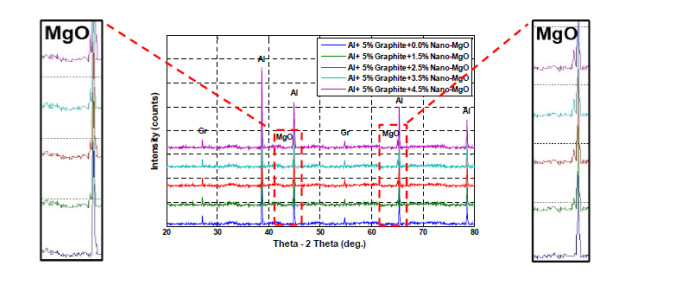
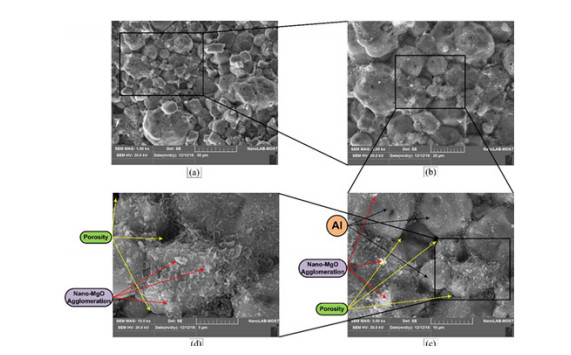
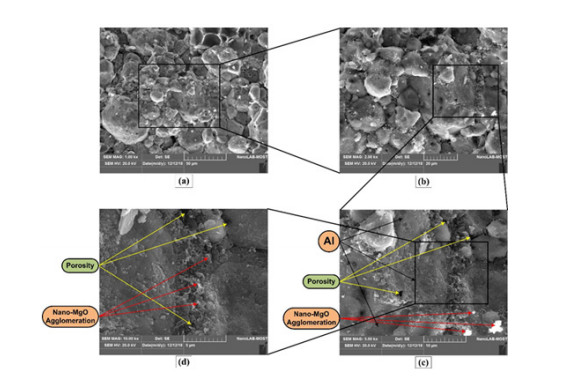
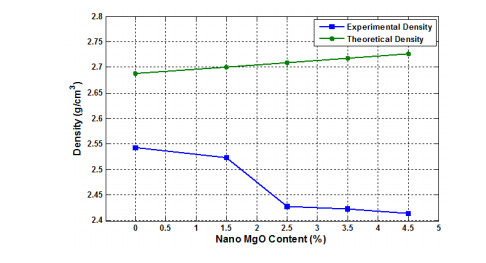
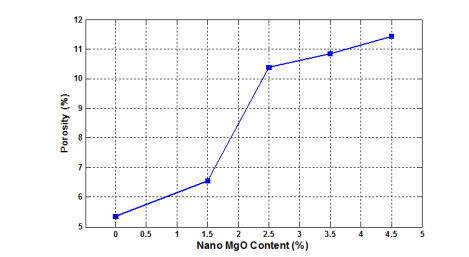
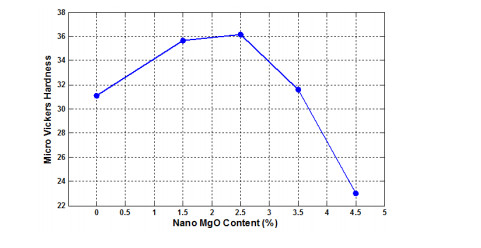
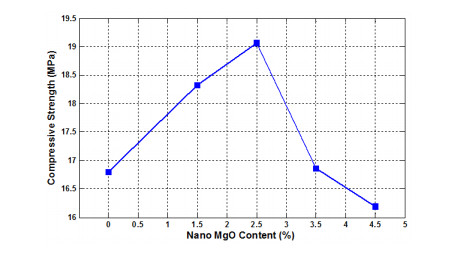
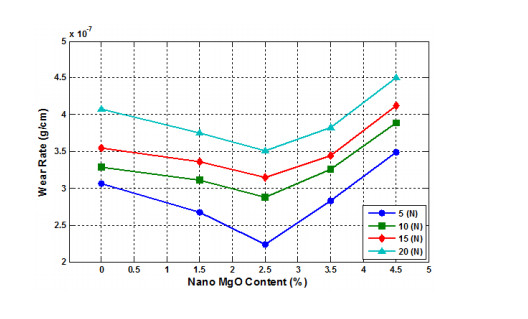
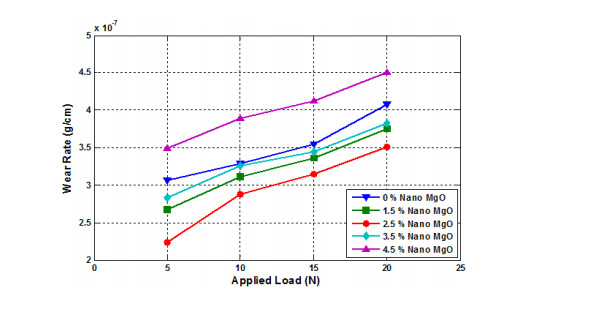


 DownLoad:
DownLoad: